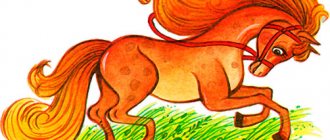Hello, dear readers! In this article I will tell you how the fungus tongue exercise and massage of the speech organs will help you to make some sounds. There comes a time for all children when they start talking. Of course, this is the most important period in speech development. Normally, a child begins to speak at ten months. Diction disorders become more noticeable by the age of two, when the baby tries to find the correct syllables, combining them into words.
If a child is unable to pronounce sounds, syllables, words and phrases correctly, then the cause may be problems in the structure of the organs of articulation, for example, reduced mobility of the tongue. This is where parents should be wary if speech is slurred, hissing sounds and the “r” sound are missing or severely distorted. The baby faces difficulties in communication, spelling, decreased self-esteem and self-confidence.
Short bridle
The reason why a child cannot pronounce a sound is weak muscles of the tongue, cheeks, lips. He has difficulty placing his lips and tongue in the correct position to produce a clear sound. Of course, a common cause of impaired pronunciation of sounds is a shortened hyoid ligament (frenulum). The normal length of the frenulum is one and a half centimeters.
Your dentist may recommend trimming the hypoglossal ligament using a laser or surgery. But it is best to do this in a newborn age, because at the age of 5 - 6 years after healing, a scar remains, which can interfere with speech. Alternatively, try stretching using articulation exercises.
With the help of exercises we will try to stretch the hypoglossal ligament. This is necessary for making the sounds “R” and “L”, as well as other hissing sounds. The effectiveness of the exercises increases if articulatory gymnastics are performed correctly.
Classes are conducted in a well-ventilated, lighted room. The child sits in front of the mirror on a comfortable chair so that his feet reach the floor. At the very beginning, the child and the adult should sit in front of the mirror, the child looks and repeats the movements. When performing the “Mushroom” exercise, the baby should smile and open his mouth wide. Then suck the tongue to the roof of your mouth.
Click your tongue, do the “horse” exercise if it doesn’t work out right away. Then repeat the “mushroom” again. You can support the tongue from below with a spoon, spatula or massage probe. The exercise does not always work out right away, so that the child is not distracted; you can show a picture of mushrooms, tell about them, how they grow, how they are collected, and put in a basket. In the following classes you can tell poems and riddles about fungus. Play collecting toy mushrooms in a box.
Sound R: right-wrong
The sound R is one of the most difficult sounds in the Russian language. To reproduce it, refined movements of the speech apparatus, sufficient vibration and amplitude of the tongue and other physiological “achievements” are required. It is not surprising that most children experience certain difficulties in forming the correct pronunciation of the sound R.
As a rule, there are not so many options for involuntary distortion of the sound R among the younger generation. The most common children's “bullying” of the sound R:
- The sound just skips and falls out. This is especially true for words where the sound P is between vowels: sa_ay (instead of barn), gа_azh (instead of garage), ma_oz (instead of frost);
- Instead of the sound R, the sound L, Y or Y is obtained: koyova (instead of cow), luka (instead of hand), klaska (instead of paint), yba (instead of fish);
- The sound R is pronounced recognizable, but not typical for the Russian language (bilingual children especially often “sin” with this). A child may not pronounce the sound “firmly”, as is typical for our speech, but, for example, grate (as is customary in French), or vibrate excessively (as is typical in English).
© Provided by: Woman.ru
How to check the pronunciation of the sound R in a child? First, ask your baby to “growl” - in other words, say the sound R several times on its own, and not as part of any words. Then have the child repeat after you words like: crow, king, grass, order, etc. If the child is unable to pronounce the single sound R, then the first thing you have to do is to practice exactly this - teach the baby to pronounce the sound R by itself. If the child “growls” “excellently”, but pronounces the sound R incorrectly in words, then the correct pronunciation should be practiced primarily in the syllables: ra-ro-ru-ri-ar-or-ir, etc.
"Mushroom" with passion
Sometimes this will take quite a long time; unfortunately, not everyone has enough pictures. There are overly active children who are unable to sit and do the exercise. They get bored. You can try making “Mushroom” at home using game techniques. Make up a fairy tale. Put on a puppet show using cocktail umbrellas, for example.
Show a cartoon about a fungus. Every parent knows what their child loves. Take advantage of this, get interested, outwit and try to repeat the exercise.
The “Mushroom” exercise is the most effective in stretching the hyoid frenulum. It is important to do it correctly and regularly.
Before performing the “Mushroom” exercise, do a short warm-up for your tongue. The process will become more fun and interesting by telling a fairy tale.
It’s time for speech therapy exercises
You should seriously think about producing the sound R if the child is five years old and has not yet learned to growl and purr “cleanly” and loudly. His fish are still swimming in his aquarium, his shaiks are still flying into the sky, and his milk is being given by koevs...
The first consultation with an experienced speech therapist will enrich you with knowledge of exactly what problems your baby has with the articulation apparatus, and what specific exercises you should practice with him. But in addition to special gymnastics, there is also a more or less common set of exercises for all cases of producing the sound P, which you also have to perform daily with your baby. Get ready for the fact that you will spend an average of half an hour a day on this, and the whole epic of mastering pronunciation can last for a year and a half.
As a rule, the production of the sound P, as well as other sounds, is divided into three stages:
- first you must teach your child to confidently pronounce this sound in isolation, on its own;
- then you should master confident pronunciation of sounds in syllables and words;
- and only then train the sound in continuous speech, sentences and tongue twisters.
In everyday life, you can often observe the opposite picture: parents hang over the child, jabbering tongue twisters and calling on the child to immediately repeat what was said. Alas, this tactic almost always fails—the child gets scared and refuses to train at all.
The Tale of Little Mushroom
Once upon a time there lived a small mushroom in a pine forest. And he really wanted to grow up quickly, but didn’t know how. There were rumors in the forest about the old and wise old man Borovichka. The fungus went on a search. For several days and nights he walked through the forest, asking all the mushrooms he encountered along the way. Unfortunately, no one knew where the old man lived. Coming out to the edge of the forest, an old man named Borovichok sat near a tall spruce tree on the sun-warmed grass.
Mushroom was delighted and ran as fast as he could towards him. Mushroom asked how he could grow up faster. The old man frowned, became thoughtful and said: “With the first warm rain you will begin to grow.” First, your cap will stretch upward, and then your leg will begin to stretch out and grow.” Mushroom thanked the old man and went home. As Borovichok said, with the first warm rain the Fungus began to grow and grew into a large beautiful boletus.
Using a fairy tale as an example, show your child the “Mushroom” exercise. Only the tip of the tongue is a cap. The mushroom stalk is the sublingual ligament.
Other reasons for incorrect pronunciation of the sound R
Inactive articulatory apparatus.
NOTE: In this case, you should focus not so much on directly producing the sound R, but on... grimacing! In a playful way, stimulate your baby to actively “move in the mouth” - let him stick out his tongue, twist it into a tube (children love this!), try to reach his nose or chin with his tongue, move his jaws, bare his teeth, stretch his lips in an “ah” smile. la Cheshire cat” and so on and so forth. All these funny pranks will quickly strengthen the facial muscles and develop the mobility of the speech organs.
Phonemic hearing impairment.
NOTE: As a rule, phonemic hearing disorders (when a child hears the speech structures of adults, recognizes them and tries to reproduce them in his speech) manifests itself in the fact that a child aged four or more misses letters/sounds in words when speaking or reading. confuses voiced and voiceless consonants, as well as soft and hard consonants (for example: love-loubof, nanny-nana, door-tver, stool-diaburedka, etc.)
“Problems” in speech breathing.
NOTE: Speech breathing is the basis for proper adequate sound production. The most common speech breathing disorders are usually chronic runny nose, enlarged adenoids, some immune diseases, and diseases of the cardiovascular system. To develop proper speech breathing, we use our own special gymnastics (where speech is combined with physical exercises), which is usually prescribed by a speech therapist, adapting to the individual characteristics of the child.
Science has proven that the ability to pronounce complex sounds - including the sound R - is determined not only by the developed articulatory apparatus and the characteristics of the speech that the child constantly hears, but partly also genetically.
If there are no serious physiological reasons for the child’s diction problems, then get recommendations on speech gymnastics from a speech therapist and start daily exercises.
Massage of the hypoglossal ligament
In order to quickly stretch the ligament, massage under the tongue is required. Sequence of massage:
- Open the baby's mouth;
- Pull out your tongue and place it on your upper lip so that the frenulum is visible.
- Cover your tongue with a handkerchief, holding it with your fingers, and with your other hand (index finger and thumb) slide along the frenulum in different directions with stretching movements.
You can massage using massage probes or attachments.
The problem of pronunciation of sounds in children of preschool and school age always remains relevant. Therefore, how a child speaks correctly in the future is entirely the responsibility of the parents. Speech therapy knowledge will help overcome disorders and correct speech. Be sure to repeat the exercise at home, and your baby will quickly learn to speak correctly.
Subscribe to our blog, there are many more interesting articles that everyone should read. Take care of your children and all the best!
Here are other articles with more detailed descriptions of the exercises: cup horse accordion delicious gymnastics lip exercises standard gymnastics
Release the R sound from the reins
Since the article deals specifically with “home” exercises for producing the R sound in children, the first step is to remind you: even if you, full of parental love and speech therapy enthusiasm, decided to independently teach your baby to roar loudly no worse than a tiger cub and without embarrassment declare a rhymed story about a bitten Greek at family matinees, then you still need at least one, initial, consultation with a professional and experienced speech therapist.
The fact is that often the inability to correctly pronounce the sound R is explained not so much by a poorly developed articulatory apparatus, low mobility of the tongue and similar problems, but by the individual structure of the hyoid ligament - the so-called “frenulum”. And only a doctor can determine this nuance.
In most cases, the underdevelopment of the “frenulum” (due to which the baby’s tongue simply does not reach the upper palate, which makes it difficult to pronounce a number of sounds, including the sound R) can be leveled through daily exercises and special massage. But sometimes there are cases when this ligament needs to be trimmed in order for the tongue to acquire the proper range of motion. It is this dilemma - to cut or not - that a speech therapist can resolve. Moms and dads, don’t worry - modern doctors in most cases are inclined to the method of stretching the “frenulum” by performing special speech therapy exercises, including exercises for producing the sound R.
© Provided by: Woman.ru
The key to success: patience and work
Be patient and go from simple to complex. Fortunately or unfortunately, the speech therapy task is fundamentally different, for example, from trying to teach someone to swim - if you can learn to float on the water and flounder your limbs overnight, then, alas, it’s definitely not possible to pronounce sounds correctly. Because what plays a role here is not so much the technique of execution, but the gradual development and strengthening of the articulatory apparatus.
Remember one simple rule : any activity, including speech therapy exercises, should bring pleasure and positive emotions to the child. How you achieve this is your problem, not the baby's. And only if your offspring is happy to perform speech gymnastics (and you keep in mind that it is easy for you to move your tongue and pronounce different sounds, but for a baby this is always a huge amount of work, discomfort, and sometimes even certain painful sensations), you will achieve success.
Invent fun and amusing activities for your child with the sound/letter P, turn daily speech exercises into a funny game, and never (even as a joke!) tease your baby - and you yourself will not notice how your child will become firmly “friends” with all the sounds of his native speech . Even with something as insidious as the sound R.









